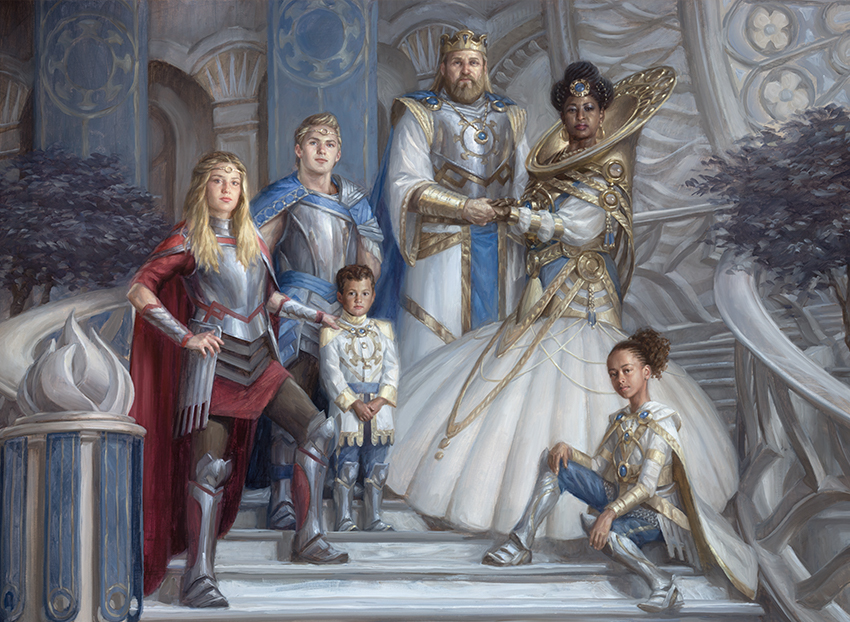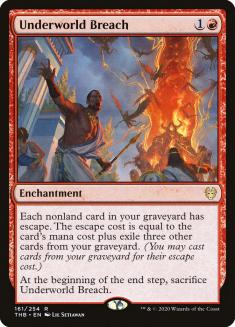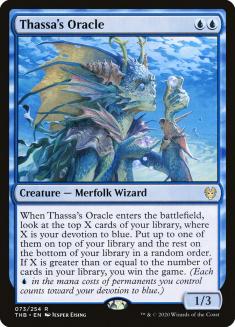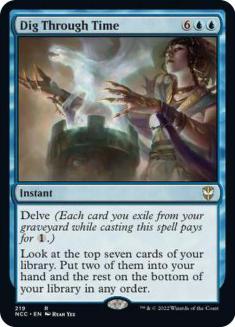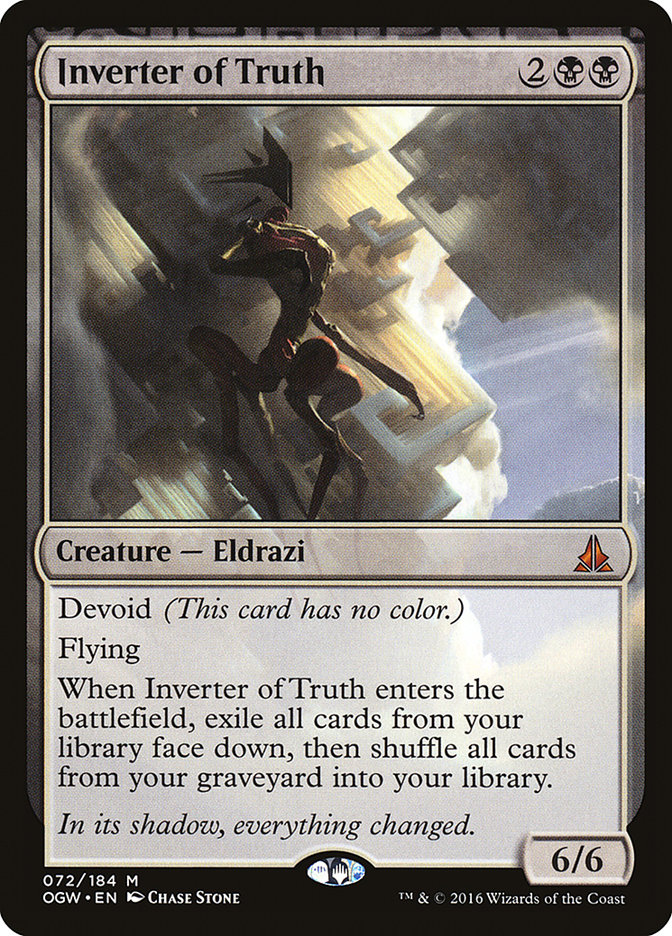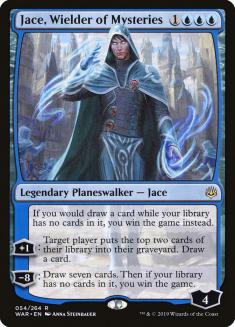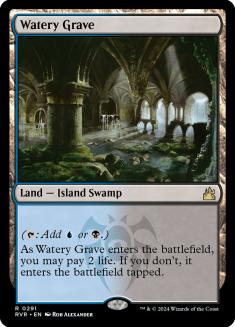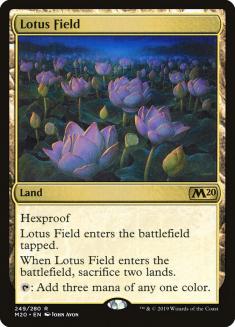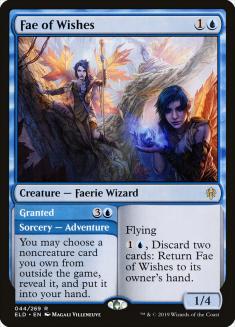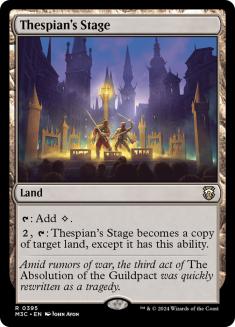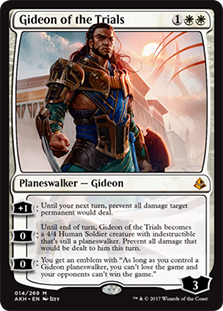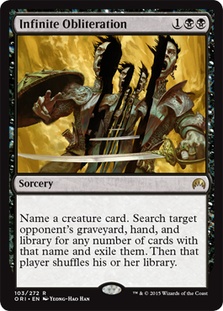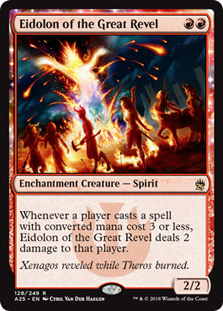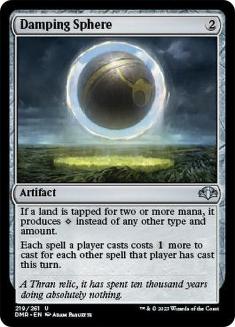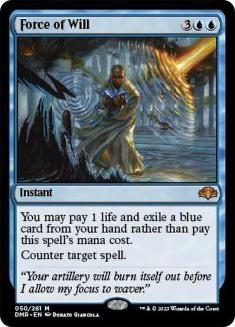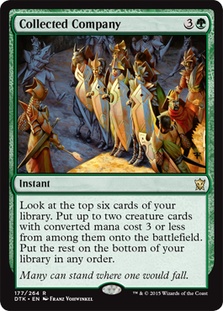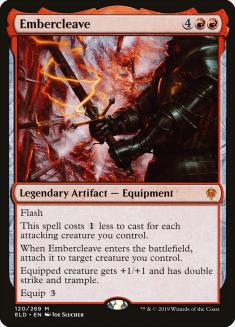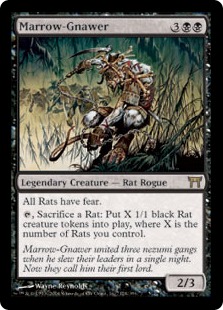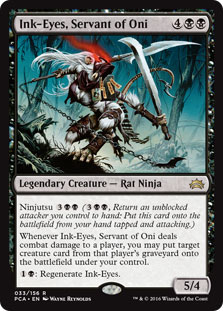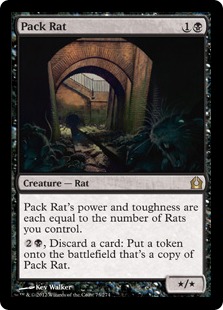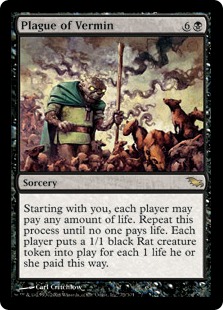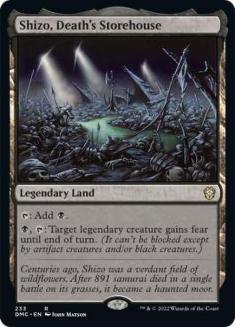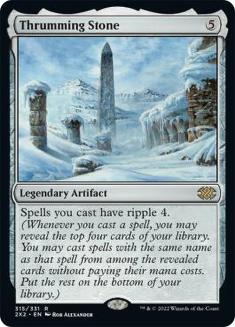Most cultures have some sort of coming-of-age ceremony, a ritual to celebrate the transition into adulthood. From bat mitzvahs and bar mitzvahs to quinceañeras and high school graduations, the desire to mark and celebrate the end of childhood feels almost universally human.
For Pioneer, Magic’s youngest format, the Players Tour events in Brussels, Nagoya, and Phoenix are something of a coming-of-age ceremony. These are the first major Pioneer events put on by Wizards of the Coast (WotC), and they also mark the end of the format’s “weekly bans” era. For the first time ever, Pioneer is being treated like any other “mature” format. If it is going to thrive, it’ll have to be as an adult.
In Magic Finance, these things matter. The Pioneer metagame might not be stable yet — we’ll get to that later — but WotC showcasing the format at the highest level subconsciously tells us that it’s safe to buy in. Format prices are built on a foundation of trust, and more people are going to start building their long-term Pioneer collections now that WotC has shown confidence in the format and the pros have taken their best shot at establishing a clear metagame. We might not see a series of price spikes coming out of Phoenix this weekend, but the overall Pioneer index is still trending steadily upward. If you want to buy into Pioneer and you haven’t done it yet, your window might be closing.
That’s why I want to spend the day talking about Pioneer. What does the format look like after two straight weeks of high-level play? What’s likely to happen to Pioneer going forward? And if you’re looking to buy into the format right now, what’s the best way to proceed? Let’s find out.
Pioneer Is Currently Being Defined By Combo Decks That Barely Existed Two Weeks Ago
Of the ten most popular decks at Players Tour Phoenix, three of them are combo-centric: Dimir Inverter, Lotus Breach, and Mono-White Heliod. Taken together, they made up about a third of the Day 1 metagame.
That may not seem like much, but it’s rare for combo decks to make up that large a percentage of any metagame. It’s especially noteworthy once you also take into account the fact that Dimir Inverter was the most popular Day 1 deck by a fairly wide margin, and that Lotus Breach was the breakout deck of the event.
Creatures (8)
Planeswalkers (3)
Lands (20)
Spells (29)

Creatures (14)
Lands (23)
Spells (23)

The reason for this rapid combo innovation is twofold. First, as we discussed earlier, this series of Players Tour events marks the first series of high-profile Pioneer events in the short history of the format. Pro players have been tinkering with Pioneer for months now, but this is the first time there’s been real incentive for most of them to heavily test Pioneer in an attempt to break the format. This sort of focus tends to lead toward rapid innovation, and that’s exactly what we got.
Second, none of these decks would exist without cards from Theros Beyond Death. Dimir Inverter exists because of Thassa’s Oracle, Lotus Breach exists because of Underworld Breach, and Mono-White Heliod requires its signature card. Combo decks existed in Pioneer before the release of Theros Beyond Death, but WotC banned most of the better ones right away. Theros Beyond Death is the first set that’s hit shelves since WotC moved away from weekly bans in Pioneer, and it just so happens to have contained a few of the better combo cards in the format. This is the result.
But does that mean it’s time to buy into one of these shiny new combo decks? Not so fast.
Dimir Inverter Crushed The Field Last Week. Lotus Breach Crushed The Field This Week. I’m Not Buying Either
Dimir Inverter made up about 20% of the field at Players Tour Nagoya, where it was the most popular Day 1 deck in the room. Bant Spirits may have taken down the Top 8 field, but Inverter was still the story of the tournament. It was the only major deck in the event with a win rate above 60%, and there were five copies of it in the Top 8. It was especially effective against the bigger Mono-Red decks, Golgari Midrange, Izzet Ensoul, and Five-Color Niv-Mizzet.
Creatures (8)
Planeswalkers (3)
Lands (19)
Spells (30)

A week later, Dimir Inverter came into Phoenix with a target on its back. Not only was the field filled with sideboarded answers to the Inverter combo, but very few people decided to sleeve up the decks that proved weak to Inverter in Nagoya. Golgari Midrange, Izzet Ensoul, and Five-Color Niv-Mizzet saw a lot less play, and the Mono-Red Aggro decks sped up significantly. As a result, Dimir Inverter’s win percentage dropped by quite a bit — though not by enough to make me feel as if the deck is going away anytime soon.
Of course, this story was overshadowed by another deck’s rise to prominence. Last weekend, just twelve people brought Lotus Breach to Players Tour Nagoya while just thirteen brought it to Brussels. In Phoenix, that number was up to 33. And those 33 players had an absolutely killer event, utterly crushing their matchups against Azorius Control, Mono-Black Aggro, Mono-White Heliod, and — yes — Dimir Inverter. In fact, the rise of Lotus Breach as a deck that can beat Inverter is the biggest reason why Inverter didn’t do as well in Phoenix as it did in Nagoya.
Creatures (15)
Lands (22)
Spells (23)

Why am I so skeptical about buying these decks right now, despite their gaudy win rates? Because I suspect that one or both of them will face a banning sooner rather than later. I know, I know, the discourse around bans is exhausting, and WotC is no longer banning cards in Pioneer every week, but I simply don’t think that they’re going to allow these two decks to run rampant.
Here are the facts: Dimir Inverter still did well in Phoenix despite the fact that people simply stopped playing the decks that did the worst against it the week before and loaded up their sideboards against the combo. In fact, the biggest reason why it didn’t do absurdly well again was the innovation of an even more powerful combo deck that’s even harder to fight. There also isn’t really a single deck that’s got a great matchup against both Dimir Inverter and Lotus Breach, and a lot of the decks that are good against one of them are awful against the other. For example, Azorius Control is one of the tougher matchups for Inverter, but the deck cannot beat Lotus Breach in its current configuration.
Is it possible that the metagame will adjust to prevent these decks from taking over? Yes, but I don’t expect that WotC will let that happen. The combination of WotC’s general anti-combo sentiment, these events being the first major Pioneer tournament, and the fact that these combo cards are all new to the format smells like a ban to me. At the very least, I’m not taking that risk.
What Card(s) Might Actually Be Banned Next In Pioneer?
There are three major options worth considering: Underworld Breach, Thassa’s Oracle, and Dig Through Time.
Underworld Breach seems like it’s on target for a banning at some point regardless. Even if you ban Lotus Field or something else from the Lotus Breach deck this week, Underworld Breach will probably end up in another equally broken deck in the near future. It is not a fair Magic card. WotC might give us another couple of weeks to develop a counter to this deck, but I strongly suspect that Underworld Breach will be banned at some point early in 2020.
I’m a lot less certain that Dimir Inverter will be banned, but Thassa’s Oracle is probably the card to hit if you’re going to do it. It’s the part of the combo that’s not the formerly-bulk mythic four-drop creature, and I suppose casual folks could technically still play the deck with only Inverter of Truth and Jace, Wielder of Mysteries if they wanted to.
On the other hand, WotC might just ban Dig Through Time. It wouldn’t hurt Lotus Breach at all, so they’d have to take it out alongside Underworld Breach, but it would allow Dimir Inverter to keep existing at a lower power level. I’m not sure if that’s good enough, as 2019 was full of failed attempts to ban around the actual problem in Modern, but the card has definitely been on thin ice since the inception of the format.
Financially, the only one of these cards that’s worth moving on from right now (if you fear a banning like I do) is Dig Through Time. The other two cards still have game in other formats, while Dig Through Time is going to plummet back down toward the bulk rare range if it’s banned in Pioneer. The card is currently sold out at $7, so the market is proving hot right now. I’m not going to sell my personal playset, but I am going to move on from my extra copies.
What Might Spike Over The Short Term If WotC Doesn’t Ban Anything?
We’re already a bit late to the party on Dimir Inverter. Last week, its older key cards — Inverter of Truth and Jace, Wielder of Mysteries — saw some pretty significant price spikes. Both were well set up for gains because they were either bulk or near-bulk before Dimir Inverter’s rise to prominence. With such a low buy-in, speculators flocked to their favorite websites and bought them all out.
The same can’t be said for the Dimir Inverter cards that were already expensive Pioneer staples before the advent of the deck. Dig Through Time, Thoughtseize, and Watery Grave all stayed stagnant, as did key Dimir Inverter sideboard cards like Jace, Vryn’s Prodigy; Kalitas, Traitor of Ghet; and The Scarab God. Few players bothered to speculate on these cards, so their increased level of play hasn’t really been reflected in their price tags yet.
I’ve already advised you to sell your copies of Dig Through Time because I expect a banning, but if you’re betting on Dimir Inverter sticking around as a key part of the Modern metagame going forward, all of these cards should see an increase in price. The more room Dimir Inverter gets to run, the more likely these cards are to pay off.
As for Lotus Breach, the key cards from that deck are set to spike early this week. It’ll probably be too late to buy in by the time this article goes live, but I suspect that Lotus Field itself will be at least a couple of bucks higher than it is right now. Fae of Wishes and Thespian’s Stage also feel like lower-risk buys with room to grow.
Of course, we also have to talk about the best answers for these two powerful combos. If you’re betting on WotC letting these decks survive in Pioneer, that means having faith in one or more of these answers to help prevent the format from being overrun by Thassa’s Oracles and Lotus Fields. And we aren’t entirely without ways to fight back:
Infinite Obliteration and Gideon of the Trials are both powerful answers to Dimir Inverter. I didn’t see much Infinite Obliteration at Players Tour Phoenix, and the card is still available for bulk rare prices, but I have seen some pros talking about it as a potential solution, so it’s not a bad penny stock-style gamble at current retail.
Gideon of the Trials seems like the more heavily embraced answer to Dimir Inverter, and the card proved difficult (but not impossible) for Dimir to deal with in Phoenix. It’s a mythic rare, so the supply is low and the ceiling is high, but your chances to speculate on this are pretty much gone at this point. Gideon is sold out at $10 right now, and its price chart is still pointing straight up. Expect this one to stay expensive as long as Dimir Inverter is a big part of the Pioneer metagame.
Eidolon of the Great Revel and Damping Sphere seem to be the best options against Lotus Breach. Neither appears to be on the move right now, but once more people look at the Phoenix results and see that they will need a plan to beat Lotus Breach, that could change. Eidolon of the Great Revel has a higher ceiling since it’s a rare that already sees maindeck play in Pioneer, but both cards could be solid short-term buys.
The Non-Combo Cards That Are Best-Positioned Going Forward
Much like Force of Will in Legacy, Thoughtseize is the card that holds Pioneer together.
Thoughtseize isn’t just the most-played card in Pioneer right now, it’s the most-played card by a fairly significant margin. In fact, nearly half of all decks in the format are running the powerful one-drop disruption spell.
I bring up the Force of Will comparison because I don’t think WotC is seriously considering a Thoughtseize ban. Nor should they consider one. Even though the card is ubiquitous, it’s one of the only ways to defend against some of the format’s most broken cards and combinations. Banning Thoughtseize would cause many more troubles than it would be worth.
Financially, Thoughtseize has not gone up in price since late November. Its value has been as stable as any card in the game — in fact, it’s been almost bizarrely stable. We’ve all just sort of decided that Thoughtseize is a $30-ish dollar card (currently sold out at $32), and that’s that.
Until that changes.
Now that Pioneer is firmly in WotC’s spotlight, $30 feels like the floor on Thoughtseize. A reprint could change that in a hurry, of course, but otherwise? At some point, this card will start to gain again, and when it does it might end up closer to $60 than $30. Regardless, everyone who wants to play Pioneer going forward needs to have a playset of this card. It’s practically non-negotiable.
I don’t think we’ve come close to realizing the true potential of Uro, Titan of Nature’s Wrath in Pioneer yet. Not only did the card help enable the Five-Color Niv-Mizzet decks, which should return to prominence if the powerful combo decks are banned, but Uro has actually joined Inverter of Truth and friends in the Sultai variants of the list. Hey, if you can’t beat ’em, join ’em!
And then there’s Sultai Delirium. The deck has a good matchup against Azorius Control, Mono-Black Aggro, and Mono-Red Aggro, plus enough game against Dimir Inverter to have taken down Players Tour Brussels despite that deck being the second-most-popular in the field.
Creatures (19)
- 1 Scavenging Ooze
- 2 Courser of Kruphix
- 4 Satyr Wayfinder
- 3 Jace, Vryn's Prodigy
- 1 Tireless Tracker
- 1 Emrakul, the Promised End
- 1 Ishkanah, Grafwidow
- 1 Walking Ballista
- 1 Murderous Rider
- 4 Uro, Titan of Nature's Wrath
Planeswalkers (3)
Lands (20)
Spells (18)

If you want to know more about Sultai Delirium, check out the article that Gerry Thompson wrote about the deck last week. Based on the matchup results from Phoenix, the deck probably needs to develop a better game against Bant Spirits if it’s going to stick around — regardless of what happens to Dimir Inverter and Lotus Breach. But either way, Uro, Titan of Nature’s Wrath is going to remain a crucial staple in Pioneer for the foreseeable future. And considering the amount of play the card already sees in both Standard and Modern, I wouldn’t be shocked if it ends up flirting with the $50-$60 range at some point this year.
Speaking of Bant Spirits, let’s talk about that deck for a bit. A week ago, it was a niche variant of Azorius Spirits that splashed green for Collected Company. Then it won Players Tour Nagoya, where five of the eight decks in the Top 8 were Dimir Inverter. Cut to Players Tour Phoenix, where Bant Spirits is the second-most-popular deck in the entire field and one of the few to make it to the top tables on Day 2. Yeah. That really speaks to the volatility of the Pioneer metagame right now.
Creatures (32)
- 4 Rattlechains
- 4 Spell Queller
- 4 Selfless Spirit
- 4 Mausoleum Wanderer
- 4 Nebelgast Herald
- 4 Supreme Phantom
- 4 Empyrean Eagle
- 2 Spectral Sailor
- 2 Brazen Borrower
Lands (24)
Spells (4)

Financially, Collected Company seems like a solid buy to me right now. Just like Thoughtseize, the card’s price tag shot up into the $20 range back when Pioneer was announced and it hasn’t really budged since then. It’s seeing a lot more play these days, though, and that should continue even if Bant Spirits falls back into the pack a little.
The Best Ways To Buy Into A Volatile Metagame Like Pioneer
If the ground-level view of Pioneer is all about Lotus Breach and Dimir Inverter, then the view from 35,000 feet is all about extreme metagame volatility. To return to my analogy from the start of this article, Pioneer may not be a kid anymore, but that doesn’t mean it’s quite an adult. In fact, Pioneer appears to be going through a bit of a rebellious teen phase, taking on and discarding personas in a search for identity.
The result of this soul-searching is a metagame that doesn’t really resemble itself from month to month. Three weeks ago, Five-Color Niv-Mizzet was the key to the entire format. This weekend, it was barely played. If you’re looking to buy into a single Pioneer deck in the hopes that it’ll be playable for months to come, you’re probably going to wind up disappointed.
If this sort of volatility is unacceptable to you, there’s (kind of) an answer: play Mono-Red Aggro. It’s almost always at least somewhat viable, no matter what else happens. The build changes a bit from week to week, but not by enough that you won’t be able to tweak your deck on the fly. Also, Mono-Red Aggro staples tend to be cheaper than average, so bonus!
Mono-Black Aggro has also been one of the Pioneer’s stabilizing forces since the format’s inception. It hasn’t always been playable, and it’s quite bad against Lotus Breach, but the deck keeps popping back up whenever the metagame re-sets after a major banning. Its package of aggressive-yet-resilient threats is a pretty solid baseline for Pioneer’s health, and the deck gets to play both Thoughtseize and Fatal Push. If I had to pick a current deck that I thought had the best shot at still being playable in Pioneer a year from now, I’d probably choose this one.
Of course, the truth of the matter is that you can’t really future-proof yourself in any Magic format, least of all one with a metagame as volatile as Pioneer. The best thing you can do is to start amassing a collection of staples that will allow you to build a series of related-but-distinct decks. The current build of Azorius Control might not survive the winter, but some blue-and-white-based control deck will probably be good this fall. Sultai Delirium might be hated out of the format, but some kind of Simic-based ramp deck will almost always be good. There isn’t a top Izzet deck out there right now, but that’ll change at some point too.
We may not know what the Pioneer metagame will look like in two weeks, much less in two months, but we do know that WotC is going to keep nurturing and supporting this format going forward. We also know that many of Pioneer’s best cards have already found a home in multiple top decks. If you want to play Pioneer, the real secret is to just put your head down and start working toward amassing playsets of the cards you’ll need for years to come. It might take longer, but it’ll be well worth it.
This Week’s Trends
In Theros Beyond Death Standard, it’s the calm before the storm. Or at least the calm before the World Championship. The format is in a pretty great place right now, and I suspect we’ll see a good deal of price movement next week as thousands of people tune in to watch the biggest Standard event of the year so far. Don’t worry — I’ll be covering that in detail next week, when we’ll go deep into the financial ramifications of the World Championship metagame.
This week, the biggest Standard gainers were Embercleave and Uro, Titan of Nature’s Wrath. We talked about Uro already today, but it’s worth pointing out that the card also sees play in two of the five or six most-popular decks in Standard: Temur Reclamation and Simic Ramp. With Uro proving itself to be a multi-format staple and all of the planeswalkers in Theros Beyond Death flopping, I don’t see its price tag coming down any time soon. In fact, the World Championship could cause it to spike beyond its current $30 price tag.
As for Embercleave, the card is mostly seeing a price increase due to its status as a staple in Standard Mono-Red Aggro. This is a super-cheap deck to build, and it’s also putting up excellent results week after week. Since Embercleave is the deck’s only expensive card right now, it’s got a little more room to run — and indeed, its price chart is still pointing upward right now. If Embercleave starts catching on in another format or two — not outside the realm of possibility, since it’s already a one-of in some Mono-Red builds in Pioneer — we could be looking at a $30+ card. The power level is certainly there.
Some of the biggest spikes of the week, as has become fairly common these days, belong to Commander. January’s Secret Lair drop was called Year of the Rat, and it featured three cards that are perfect in Rat Tribal Commander: Marrow-Gnawer; Ink-Eyes, Servant of Oni; and Pack Rat, in addition to five alternate-art copies of Rat Colony.
Plague of Vermin was the biggest beneficiary of this renewed interest in Rat Tribal, but Shizo, Death’s Storehouse and Thrumming Stone ticked up in price as well. These latter two cards saw more modest gains, but they’re much more likely to maintain their new price tags. Thrumming Stone and Shizo are essential Rat Tribal cards, and they’re both already expensive for a reason.
Plague of Vermin, meanwhile, was a $1 card as recently as last week and it’s hard to find for less than $7 right now. I don’t think that price tag will stick. The card does make Rats, and it does have an incredibly low supply, but it’s not very high up on the EDHREC charts for the key Rat Tribal cards. That tells me that this spike is probably the result of a buyout, not actual demand from Commander fans. The card may end up closer to $3 than bulk, but I’m selling into the hype if I can get anywhere near current retail.
Lastly, in a cryptic video teaser, WotC either announced that either 1) there will be five brand-new Secret Lair drops coming for the World Championship next weekend or 2) a single Secret Lair called “Five Drops” that will, presumably, be filled with the best-ever creatures with a CMC of exactly five.
Here’s hoping it’s the latter, as unlikely as those odds may be, because the alternative is that WotC doesn’t realize how overwhelming it feels to get a total of thirteen(!) Secret Lair drops in less than three months. Regardless, there’s not much more I can say until we have the details, and I’ll cover that story here no matter what.

